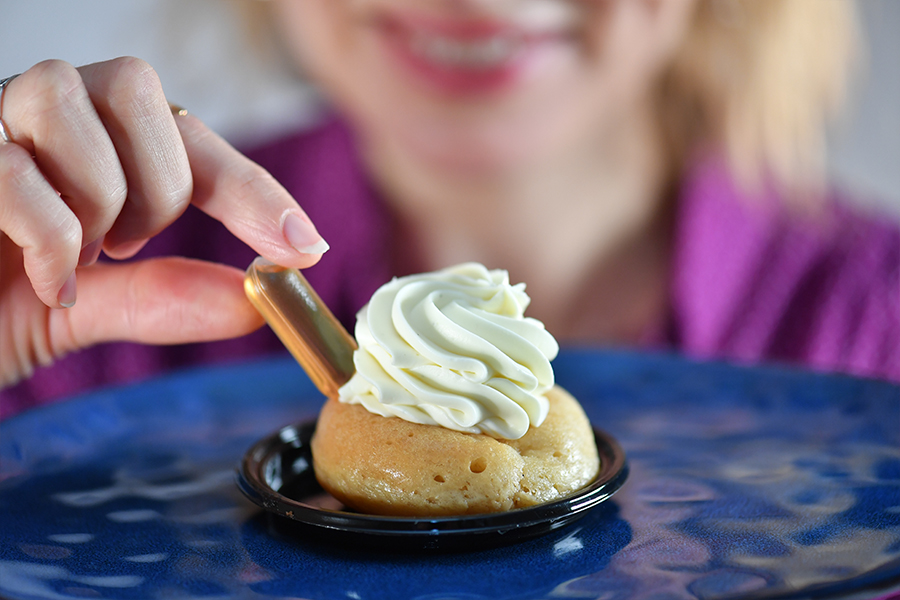
The real history of the French pastries. Part one.
7 December 2020
Wine tour in Bordeaux. Find your way amongst Bordeaux vineyards!
19 October 2022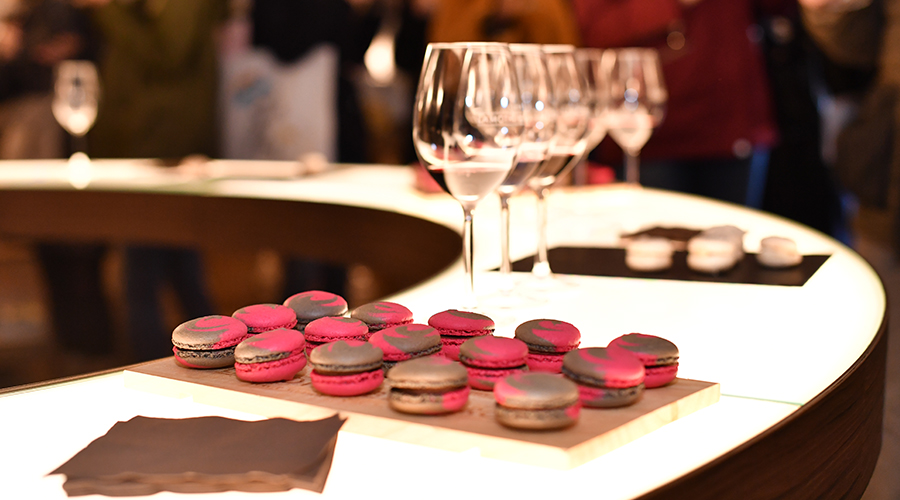
The real history of the French pastries. Part two.
French pastries: the story. Immerse yourself in the fascinating history of French pastry. Find out why a bean is introduced into the Galette des Rois, how a real French charlotte was invented, why the madeleine is shaped like a scallop and how cannelés relate to the Bordaux wines? Here is the real history of French pastry. Part two…
GALETTE DES ROIS (KINGS CAKE)
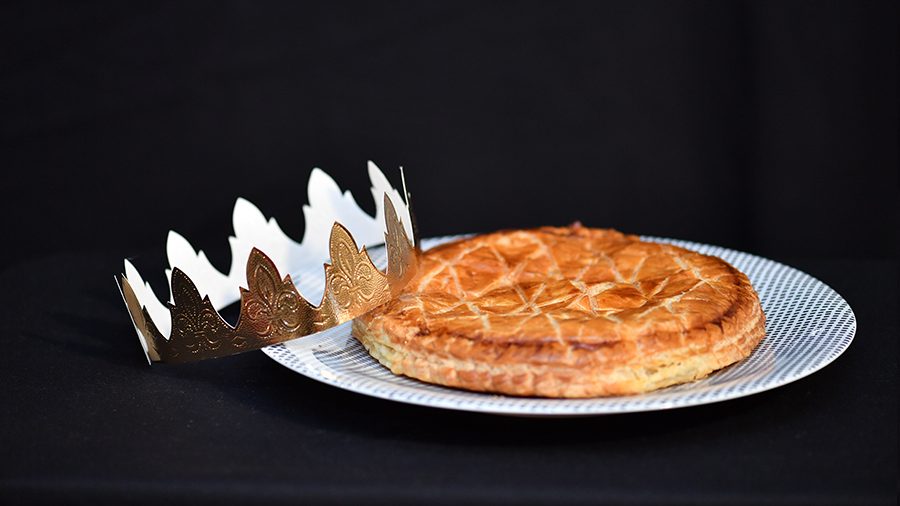
We eat the galette des rois (the kings cake) in France at Epiphany, (today the first Sunday in January) is the day when the three wise men guided by the star arrived to Jesus who had just been born. The three wise men gave Jesus gifts: gold, incense and myrrh.
The tradition of eating a galette on this date dates back to the 13th century. We share the galette in numbers of guests plus a part (part of the Good Lord or part of the Virgin) that we gave to the first poor passerby.
Once the galette is cut, the youngest of the guests hides under the table and designates the portion for each. Whoever finds the bean is King for the day and can wear the crown of the galette.
As for the bean, the tradition goes back to the time of the Romans, in the 11th century. They hid a piece of arget, gold or a simple white bean in a loaf of bread to designate the chef.
MADELAINES
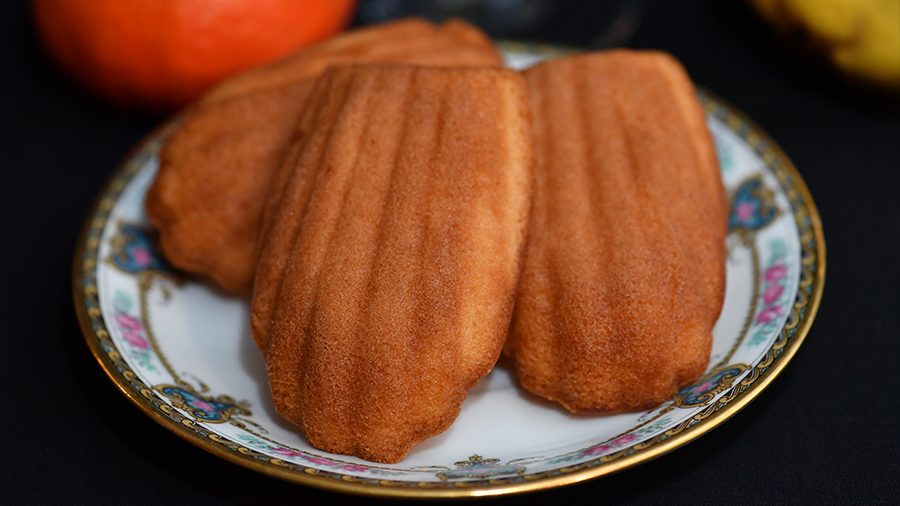
Madeleines are soft cakes without filling, made in small molds in the shape of an elongated scallop.
Without speaking of their literary glory which the madeleines owe to Marcel Proust, here are two versions of their creation.
The oldest would be that of the rudimentary brioche from the Middle Ages, molded in a real shell, and for this reason, intended for pilgrims to Saint-Jacques-de-Compostelle.
Another story goes that in 1755, in the castle of Commercy, the King of Poland Stanislas Lesczynski, received Voltaire and Madame de Châtelet for dinner.
His pastry chef argues in the kitchens, returns her apron and leaves the guests without dessert. Fortunately, a young woman saved the meal by quickly baking little soft cakes according to her grandmother’s recipe. This young girl was called Madeleine …
CANELE DE BORDEAUX
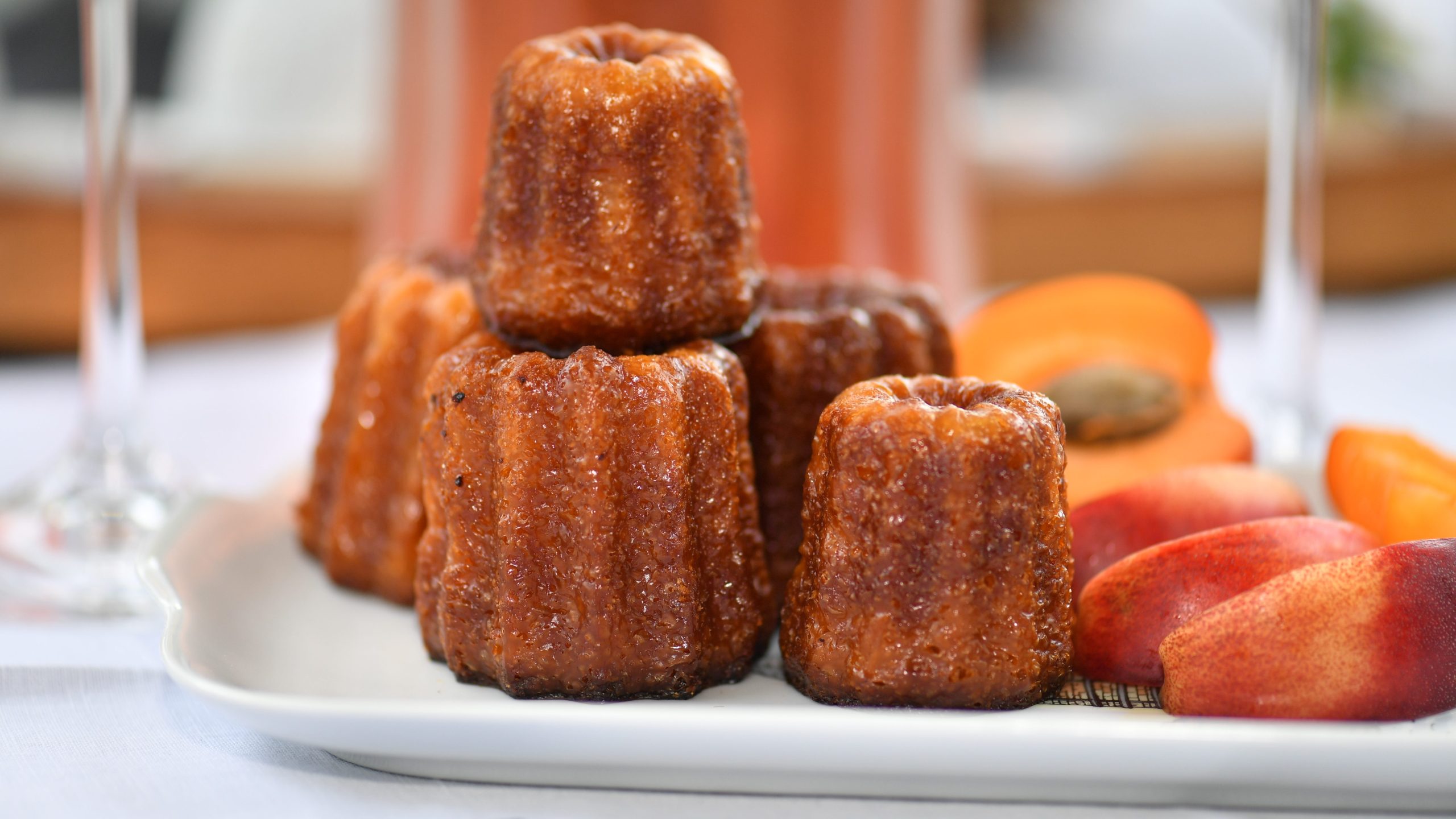
Canelé is a small cake from Bordeaux, soft on the inside and caramelized on the outside, flavored with rum and vanilla that is baked in canelé molds.
History has two versions as to the creation of this cake.
The first says that its recipe was invented in the 16th century by the nuns of the Les Annonciales de Saint-Eulalie convent in Gironde, who collected the rests of the flour in the holds of the boats.
These first canelés hardly resembled those we know today. Actually, it was a dough that was wrapped around a tube and fried in lard.
The second version is related to winemaking. Historically many Bordeaux chateaux used (and still use) egg whites to clarify wine. This process is called fining and allows the particles in suspension in the wine, along with the egg white, to descend to the bottom of the barrel… There were therefore a lot of unused yolks left. And they created the canelés to avoid waste by adding products easily found in the port of Bordeaux (flour, rum, vanilla and cane sugar).
MACARONS
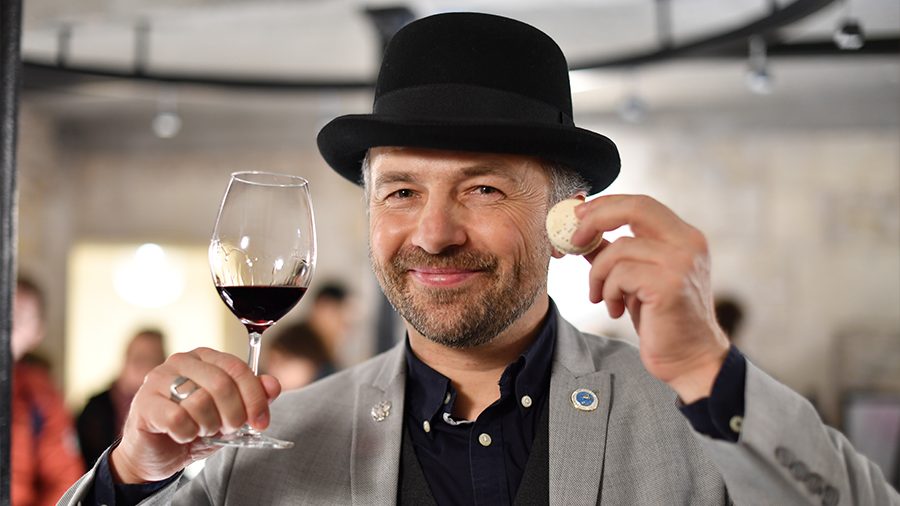
Small biscuit made from almonds, sugar, flour and egg white, the macaroon was not born in France but in Italy! It is said that in 1581 Catherine de Medici would have had this small cake served at the wedding of Duke Anne de Joyeuse in Ardèche. Then it appeared in 1660 in the Basque Country, in Saint-Jean-de-Luz, where he was offered to King Louis XIV for his marriage to Marie-Thérèse of Austria, a Spanish Infanta.
At the time, it was still a simple biscuit, without garnish. At the beginning of the 20th century, it was pastry chef Ladurée who created the Parisian macaroon that we know today, with two colorful scented biscuits side by side, with a cream or jam between them. This macaroon is a real worldwide phenomenon today.
CHARLOTTE
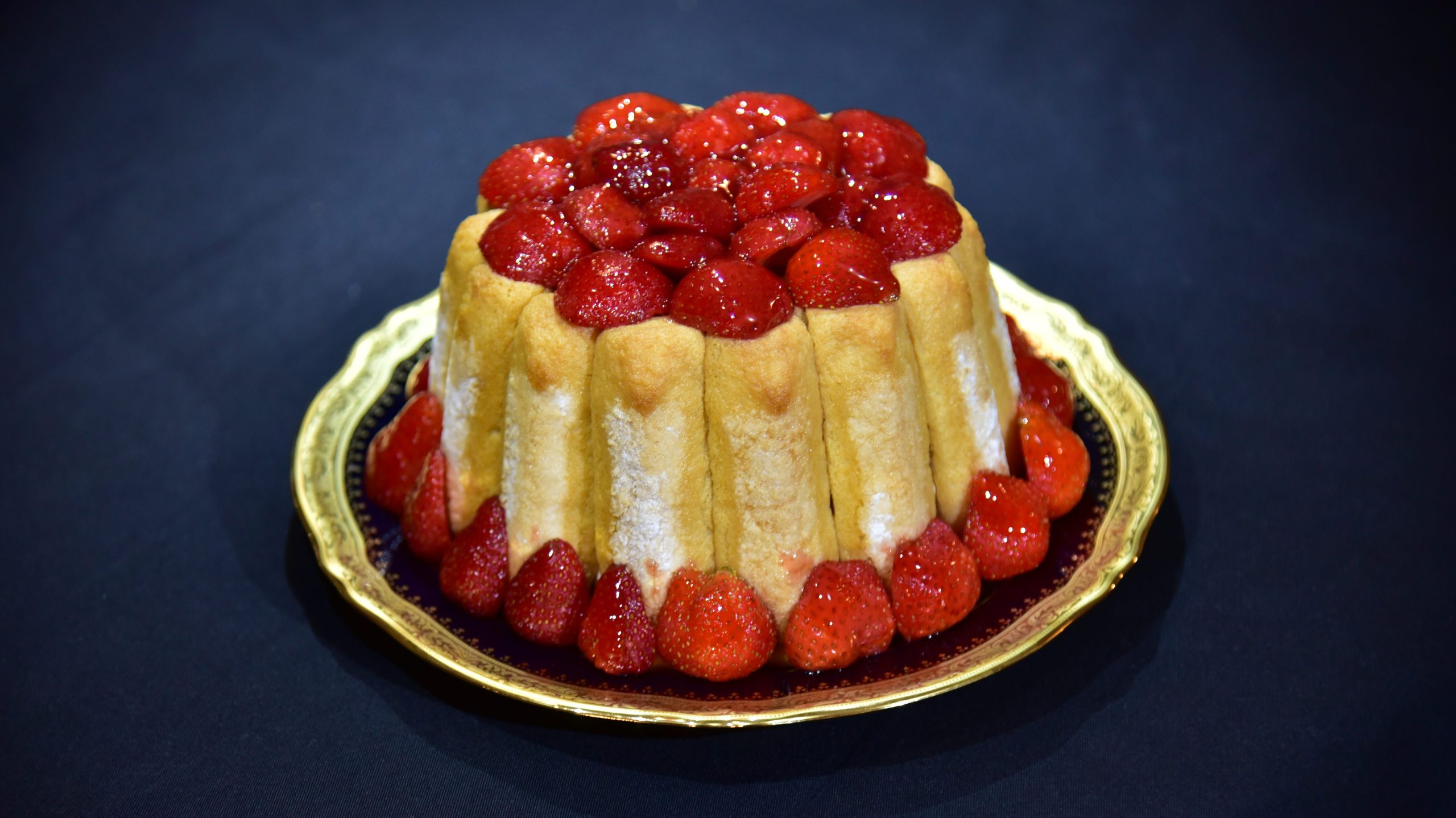
It is one of the favorite cakes of the French. But its origin is English!
Its original recipe dating from the early 19th century was created in honnor of Princess Charlotte, spouse of Georges III and grandmother of Queen Victoria. And originally it was made of white bread or brioche, filled with apple, plum or pear compote, cooked and tasted hot, to accompany a cup of tea of course …
Today’s charlotte (or charlotte à la Parisienne) was invented by pastry chef Antonin Carême. While working at the English royal court, he decided to make the Charlotte lighter.
He used ladyfinger biscuits instead of the brioche and garnished them with the Bavarian cream and fresh fruit. It had to be eaten cold.
By the way, then M Carême also worked for the Russian Tsar Alexander, and his cake was baptized “Russian charlotte”. That said, the contemporary version of charlotte in Russia is more like apple cake.
TARTE AU CITRON MERINGUE (LEMON MERINGUE PIE)

Another of the favorite desserts of the French for its freshness and sweetness. We like the sweetness of the meringue counterbalanced by the acidity of the lemon.
This wonderful tart was invented in three steps and not in France.
First the lemon cream. This cream was invented by the English in XVIII. Americans have also been very fond of this cream, but with lime. They created the Key Lime Pie which has been widely consumed by sailors to prevent scurvy thanks to its vitamin C content.
As for the meringue, its origin is Swiss but made by an Italian chef in 1720. He gives his creation the name of his birthplace – Meiringen.
As for our Lemon Meringue Tart as we prepare it today, it was created in Philadelphia in the United States by a pastry chef Elisabeth Goodwell.
PROFITEROLES
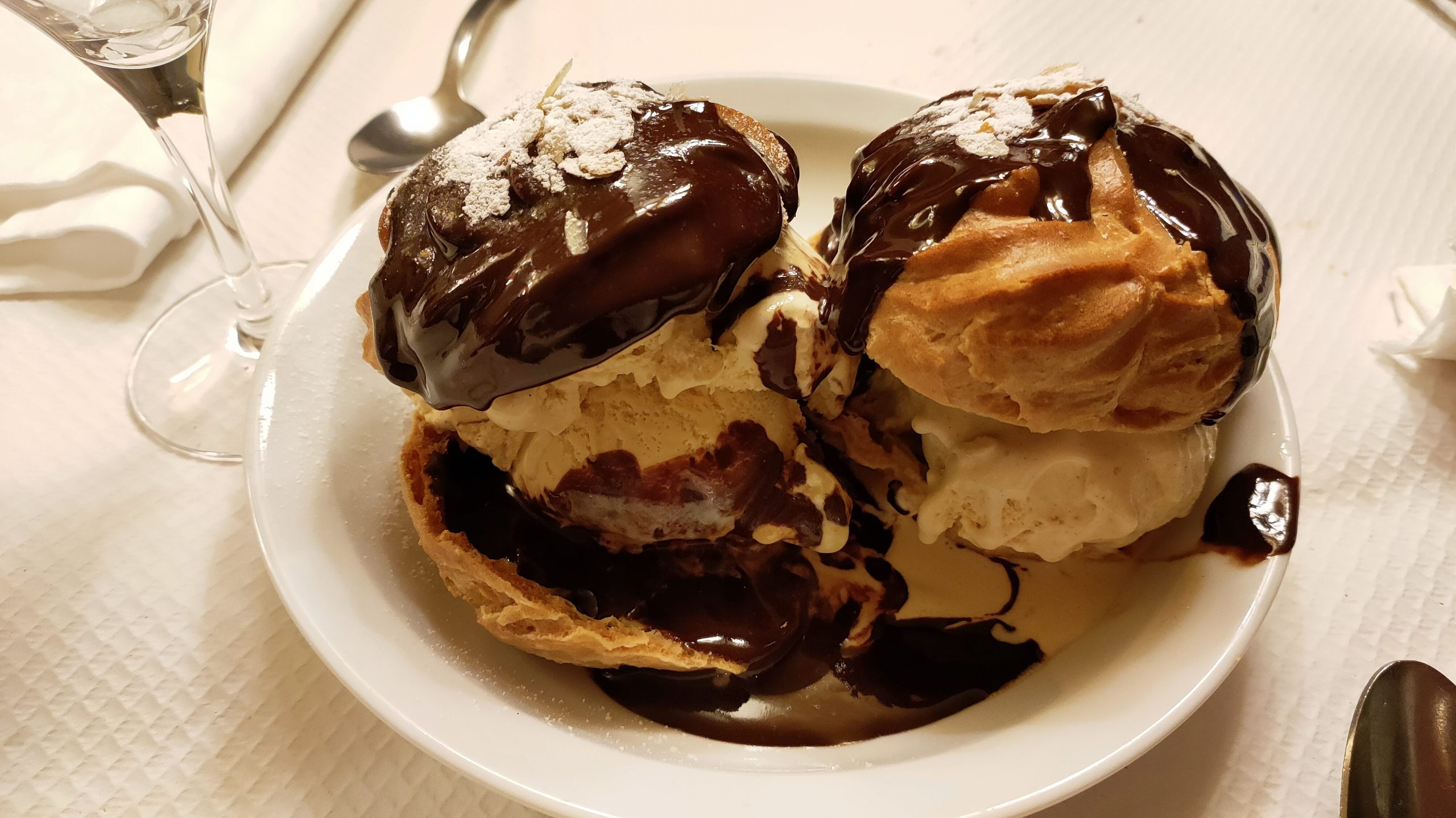
Profiteroles are small puffs filled with ice cream and covered with hot chocolate topping.
But originally, the word “profiterolle” comes from the sixteenth century. We talk then, as one can read it in Pantagruel de Rabelais, about “Profiterolles of indulgence”. It is a gratuity for the servants – a small ball of bread baked in the ashes and thrown into the “profiteroles soup”.
In 1690, the word “profiterolle” officially designated “hollow roll stuffed with beatilles (offal) and cooked in a soup.
In the same sixteenth century, the cook of Queen Catherine de Medici, invented the “hot pastry” which was actually the choux pastry that we know today.
It was in the 19th century that the “pastry chef of kings”, Antonin Carême, created small chouquettes stuffed with whipped or pastry cream. The profiteroles were born!
RUM BABA
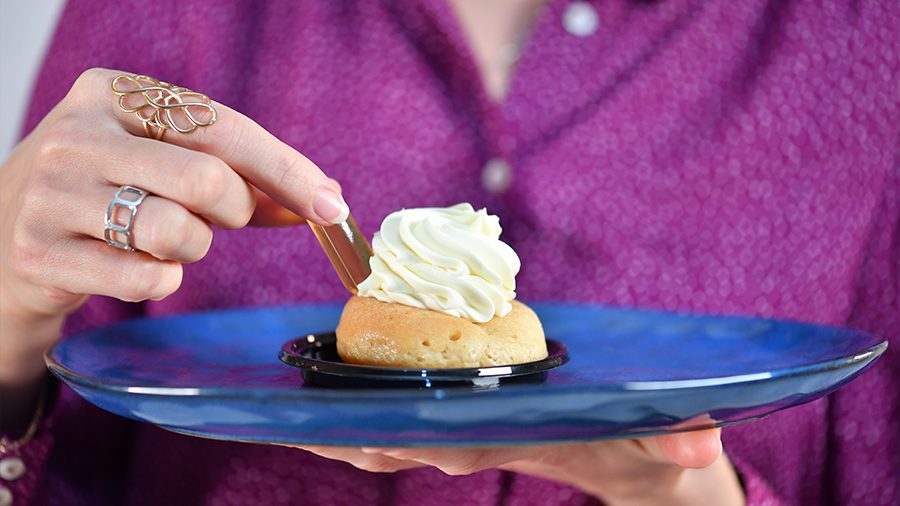
Like many good things, the rum baba recipe was born out of a mistake.
In the 18th century, a French pastry chef named Nicolas Stohrer worked for the Polish king Stanislas Leszcynski who was in exile in Alsace.
Stohrer brings from Poland a brioche for the king. But it dries out during the trip. The chef then decides to sprinkle it with the sweet Spanish wine Malaga, garnish it with pastry cream and raisins.
The king greatly appreciates the cake and renames it Ali-baba (according to the book he was reading at that time).
This recipe has evolved a little today, the wine has been replaced by rum and pastry cream by whipped cream.
SAINT-HONORE
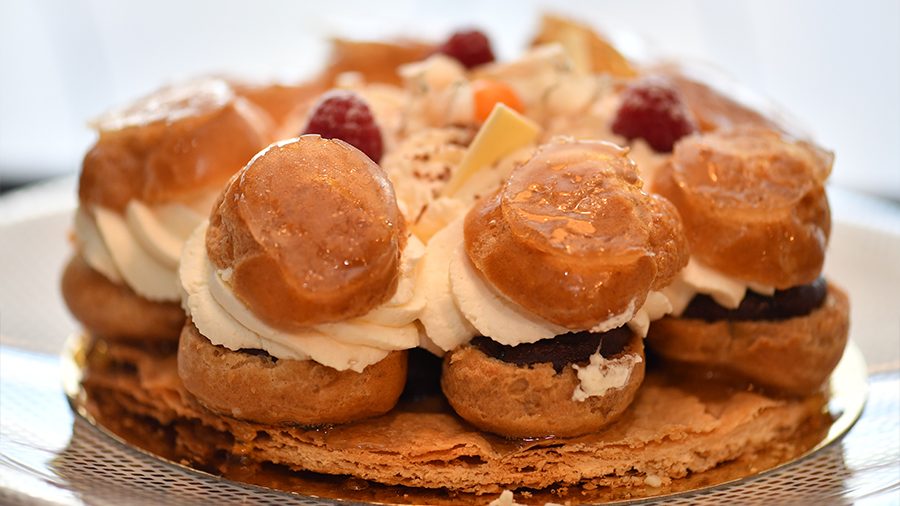
The Saint-Honoré owes its name to the 6th century Bishop of Amiens, who became the patron saint of bakers and pastry chefs.
It was created in 1850 by the young pastry chef Auguste Jullien from the famous Parisian house Chilboust, located on rue Saint-Honoré.
At first it was just a brioche filled with pastry cream.
When the young pastry chef sets up his own pastry shop, he improves the recipe. He now uses a base of shortcrust pastry (now flaky), on which he placed (with caramel) small choux, garnished with chilboust cream (light pastry cream with egg whites whipped in peaks). Light and frozen, the Saint-Honoré is an airy delight!
Alessia Sirel
Read: The True History of French Pastry. Part one.
